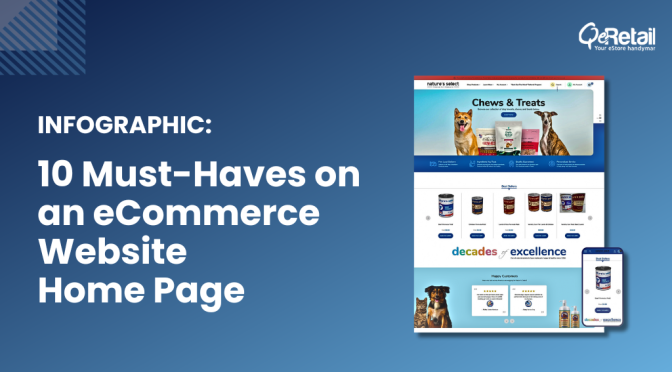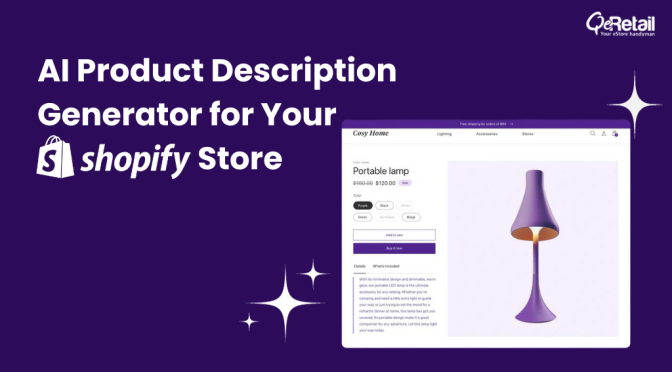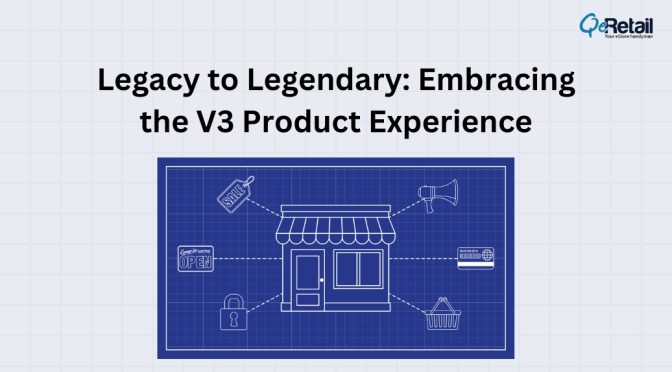Here’s a reality check for you. There are around 12-24 million eCommerce websites across the web. If yours isn’t as user-friendly or appealing as your competitor’s, your prospects will make an immediate jump. In order to stay in the eCommerce market or go beyond the competition, an eCommerce website redesign is inevitable.
In this blog, we’ll cover all the essentials of website redesign you need to know as a small and medium-sized online business owner.
By the end, you’ll gain extensive clarity on “how redesigning existing eCommerce websites enhances business?”
Without further ado, let’s get started.
Table of Contents
The dynamic world of eCommerce: The need for periodic transformations
Redesigning your eCommerce website helps you keep abreast with the ever-evolving tech landscape.
Customers notice the minute details, and that’s why you need to continuously improve your online store’s design and performance.
The process can be as minimal as changing the menu layout to an entire platform migration. As your business evolves and matures, eCommerce website redesign services like platform migration become more common.
Setting the stage: The essence of eCommerce website redesign
The website redesign is much more than just editing the design. The process may entail changes to code, content structure, multimedia, etc.
You may now ask, “Will website revamping improve my SEO ranking?”
Let’s be realistic. Gaining website rankings needs time and consistent effort. A customized and systematic strategy will increase traffic, sales conversions, and revenue growth.
Upgrade your website's appearance with our service. Get a free mockup to see the difference.
- Sleek and Modern Layout
- Mobile first design
- Color Psychology
- Interactive Elements
Why redesign matters
Let’s understand some key drivers to execute a redesign project.
Improving user experience as the driving force
User experience (UX) is a cornerstone that decides your online store’s longevity and average traffic.
Is your website responsive?
Is it mobile-friendly?
Google provides higher SERP rankings to eCommerce websites that ensure smooth mobile performance. This aspect has multiple benefits for your end users, including ease of sharing via social media, faster navigation and checkout – and improved shopping convenience.
UX, along with User Interface (UI), impacts the visit times, bounce rates, cart conversions, and your overall revenue from eCommerce business.
Navigating the ever-changing landscape of online consumer preferences
Customer centricity needs to be your prime focus during an eCommerce website redesign. Perform a test or get feedback from your existing customers.
What aspects of your website do they find tedious or worth improving?
Is it the menu navigation?
Is it the load times?
Or payment gateway?
You can also perform a feature-to-feature comparison with your direct competitors to identify areas of improvement.
Now that you have the reasons to redesign your eCommerce website let’s move on to the integral part: “How to redesign the eCommerce website?”
The Transformation Journey
Does your eCommerce website need a redesign?
It requires time, effort, money, and dedication. It’s imperative to understand the factors you need to consider before deciding on proceeding with the transformation journey.
Recognizing the signs: When to consider an eCommerce redesign
Irrespective of the reason (UI/UX, bugs, outdated tech stack), if your eCommerce website doesn’t provide the value that your competitors do, then it’s ineffective.
Outdated design elements and UI/UX shortcomings
53% of your mobile audience will bounce to another website if yours doesn’t load within 3 seconds.
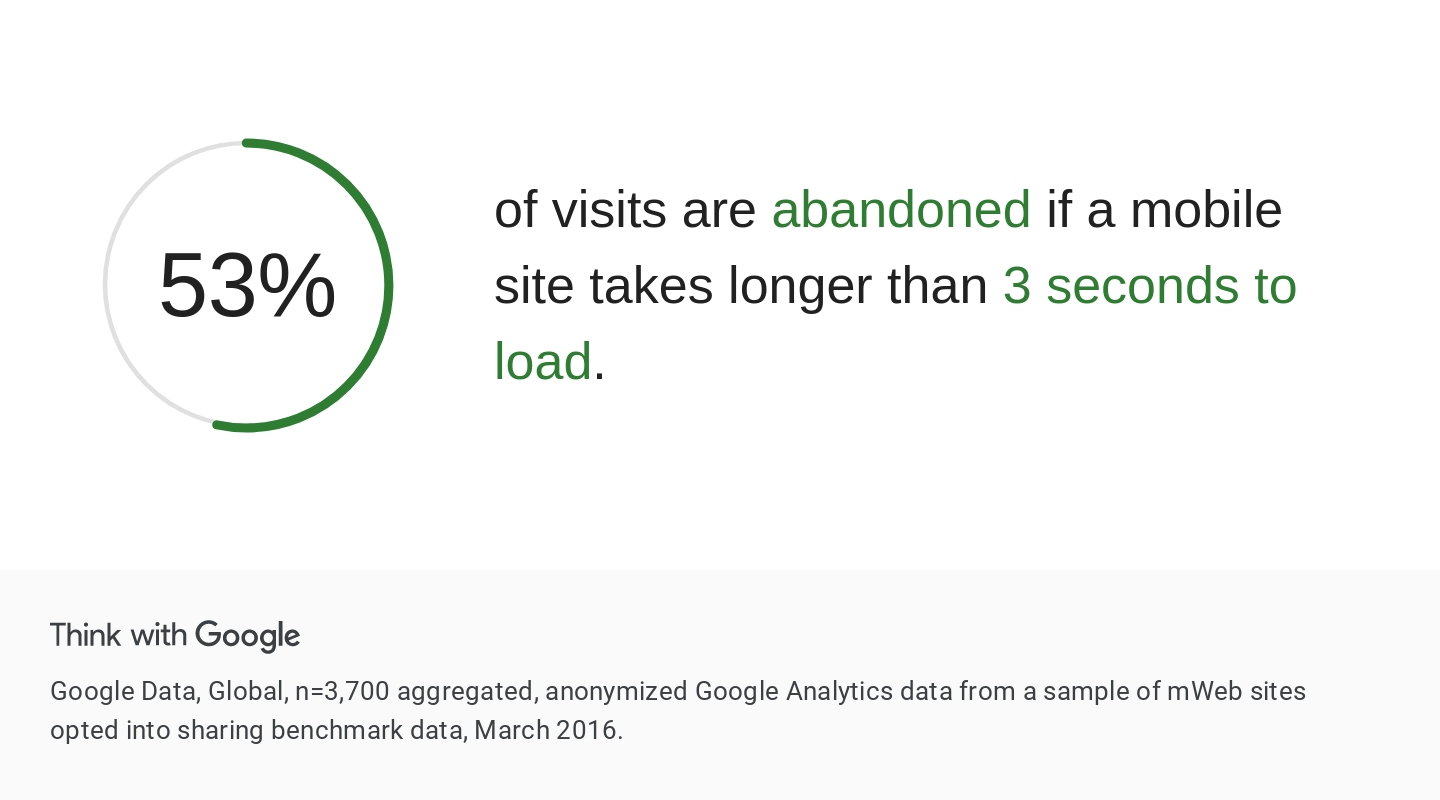
Yes, this stat indicates the core need to nail your UI/UX component. Engaging multimedia, smooth scrolling, secure and fast checkout, and relevant product recommendations are key on platforms like Shopify and Bigcommerce.
Upgrade your website's appearance with our service. Get a free mockup to see the difference.
- Sleek and Modern Layout
- Mobile first design
- Color Psychology
- Interactive Elements
Evolving business goals and target audience shifts
As a small business, you may choose a simple and economical eCommerce website design. However, as your business grows, so must your website quality and performance.
Customers from a competitor will bounce to your website, provided you have a differentiating element. A customized color palette, menu layouts, and focusing on unique branding across your web and social media helps connect better with your audience.
Mapping the roadmap: Steps for a successful eCommerce redesign
Once you decide to make the leap, you need a systematic strategy suited to your bespoke objectives.
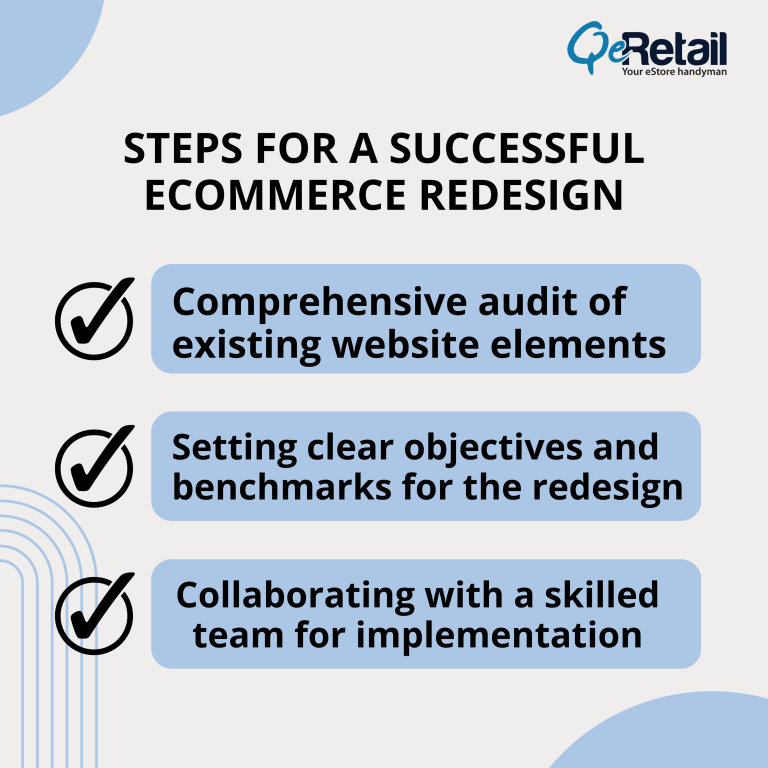
Comprehensive audit of existing website elements
Audit and document your current website elements. This primary step is a good indicator of where your current design stands and what aspects can be further improved or changed completely.
Setting clear objectives and benchmarks for the redesign
Define the end objective you wish to achieve with the website revamping. For instance, do you wish to achieve 30% faster loading times? 50% reduction in cart abandonment? Define those.
Compare existing audit data with the benchmarks you wish to achieve. Perform a gap analysis and devise a strategy that bridges those.
Collaborating with a skilled team for implementation
Once you have the business plan in place, it’s time to build a team for implementation. You can choose either an in-house development and testing team, opt for freelancers, or outsource the entire website redesign project to a reliable and professional service provider like QeRetail.
Navigating the Ecosystem: Shopify and Bigcommerce
Choosing your eCommerce website’s ecosystem is no small task. You’re opting for the technical and legal policies and constraints that’ll apply to run your online business.
With over 2.1 million users, Shopify is an eCommerce giant trusted by small and medium-sized businesses across the globe. Bigcommerce and its 1 million (and counting) users aren’t to be ignored either.
eCommerce platforms of choice: Shopify and Bigcommerce
Let’s deep dive into a comparison between these two industry leaders, focusing on the major parameters that eCommerce business owners need to be concerned with:
Setup Simplicity
While performing the redesign, the Shopify platform offers a more intuitive experience for developers during the initial setup phase. However, Bigcommerce allows more free accounts.
User Friendliness
Shopify’s navigation and learning curve is beginner-friendly. Bigcommerce requires more time for developers to grasp when it comes to the control aspects of your online store.
Customization Support
Bigcommerce wins this fight with over 280 mobile responsive design templates compared to Shopify’s 100+ options.
Plugin availability
Shopify is miles ahead here with over 8,000 plugins that help in various business departments, from marketing to customer servicing. You can test a plethora of features on your website revamping.
Tailoring the redesign to platform capabilities
How do the 2 platforms perform in terms of mobile responsiveness and SEO capabilities?
Optimizing mobile responsiveness for on-the-go shoppers
Despite more themes available for Bigcommerce users, Shopify offers a better UI/UX that’s responsive to mobile.
Harnessing built-in SEO tools for enhanced visibility
Bigcommerce fares better in the SEO department. The platform comes with a bunch of out-of-the-box SEO features, including:
- Optimized URLs
- Microdata embedded into product pages
- Automatic URL adjustments
to name a few.
Both Shopify and Bigcomerce can easily integrate with Google Analytics to track user behavior. However, Shopify has a slight edge in supporting third-party SEO applications.
Upgrade your website's appearance with our service. Get a free mockup to see the difference.
- Sleek and Modern Layout
- Mobile first design
- Color Psychology
- Interactive Elements
The Enchantment of User-Centric Design
Say you enter a website and immediately feel it’s the perfect place you were looking for. That’s the art of user-centric design.
Crafting an intuitive user experience
Studies show that most websites fail miserably when creating engaging and interesting content for the user. Avoid building cluttered and complicated web designs and focus on fast-tracking their search.
An intuitive navigational mechanism and smart product recommendations will aid buyer convenience and persuade them to repeat purchases.
You need to apply the same principle in checkout as well. Redesign your eCommerce website such that the payment checkout is fast, easy, and secure.
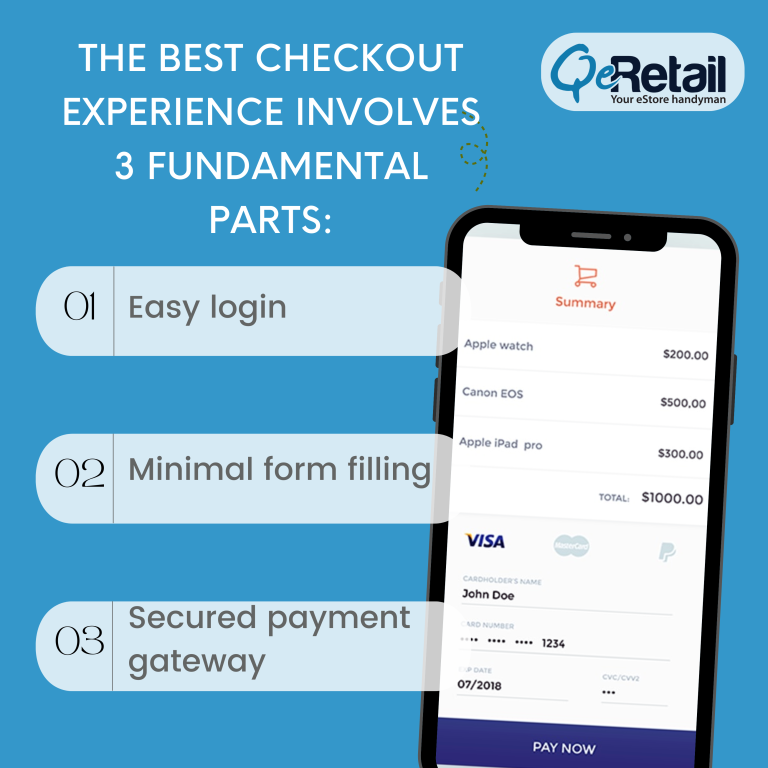
The best checkout experience involves 3 fundamental parts:
- Easy login
- Minimal form filling
- Secured payment gateway
Elevating aesthetics for engagement and trust
Studies state that your eCommerce website’s design influences 75% of your credibility. Within the first few seconds, your website’s aesthetics need to connect with the audience to avoid their immediate exit.
Once your target customer demographics are defined, select the color palettes, images, text fonts, and website templates that can connect emotionally. Thesus footwear nails the environmentally progressive outlook with earthy color schemes and a clean design.
With your design, you need to communicate a story to your visitors. Ensure that it resonates the same messaging across your web and social media handles.
Enhancing Business Potential Through Redesign
Over 73% of companies are investing in website design to gain a competitive edge. However, the entire eCommerce website redesign endeavor has a business impact associated with it.
You’ll need to evaluate the prices related to the programming, content creation, and team management and evaluate the Return On Investment(ROI) that you plan to achieve in the short and long term.
Beyond aesthetics: The business impact of an eCommerce overhaul
There is no one-size-fits-all metric for measuring website redesign outcomes. It depends on each business’s specific goals. However, the benefits that this procedure brings are experienced by eCommerce brands across industries.
An aesthetic and fast-loading website leads to more footfalls and significant reductions in bounce rates.
Seamless and intuitive navigation and fast product search results can mean a more loyal customer base who repeatedly purchase from your website instead of competitors.
These are some of the prime reasons to redesign your eCommerce website so that it still doesn’t look and feel like it was made in the 90s.
Real-world stories of eCommerce success post-redesign
eCommerce brands that successfully eased the buyer’s journey have gained big.
Bandwidth, a telecommunications firm based out of North Carolina, elevated its conversion rates by 173% after a website revamping.
The layout transformation, along with CTA improvements, led to this massive win.
Another noteworthy success story is that of the online transcription service company Rev’s website.
Rev eliminated the retro graphics and cumbersome carousels. They added a service card design with crisp descriptions, pricing, and CTA. The color scheme and animations now look modern and stylish, persuading the users to click the CTA button.
The result of their 9-month redesign project? 18% improvement in conversion rates.
Seeking Professional Expertise: eCommerce Website Redesign Services
eCommerce website revamping can lead to massive business growth when done expertly and if it’s tailored to your customized requirements. That’s why you need to partner with seasoned industry leaders like QeRetail. We possess the prowess to grant you a bespoke website makeover via cutting-edge UX strategies that help you achieve the business metrics that matter.
Conclusion
Website redesign on eCommerce platforms like Shopify and Bigcommerce plays a pivotal role in staying relevant. From the minute design aspects to overall website performance, the competitive margins are getting tinier by the day. We’ve gone through why redesign an eCommerce website and how to go about this crucial project.
We discussed the need to assess website elements regularly, find the customer pain areas, and overcome them via a redesign. It helps in sales conversions, reduced bounce rates, customer retention, and overall business growth.
If you need expert help in giving your eCommerce store a transformation like no other, feel free to contact us!



